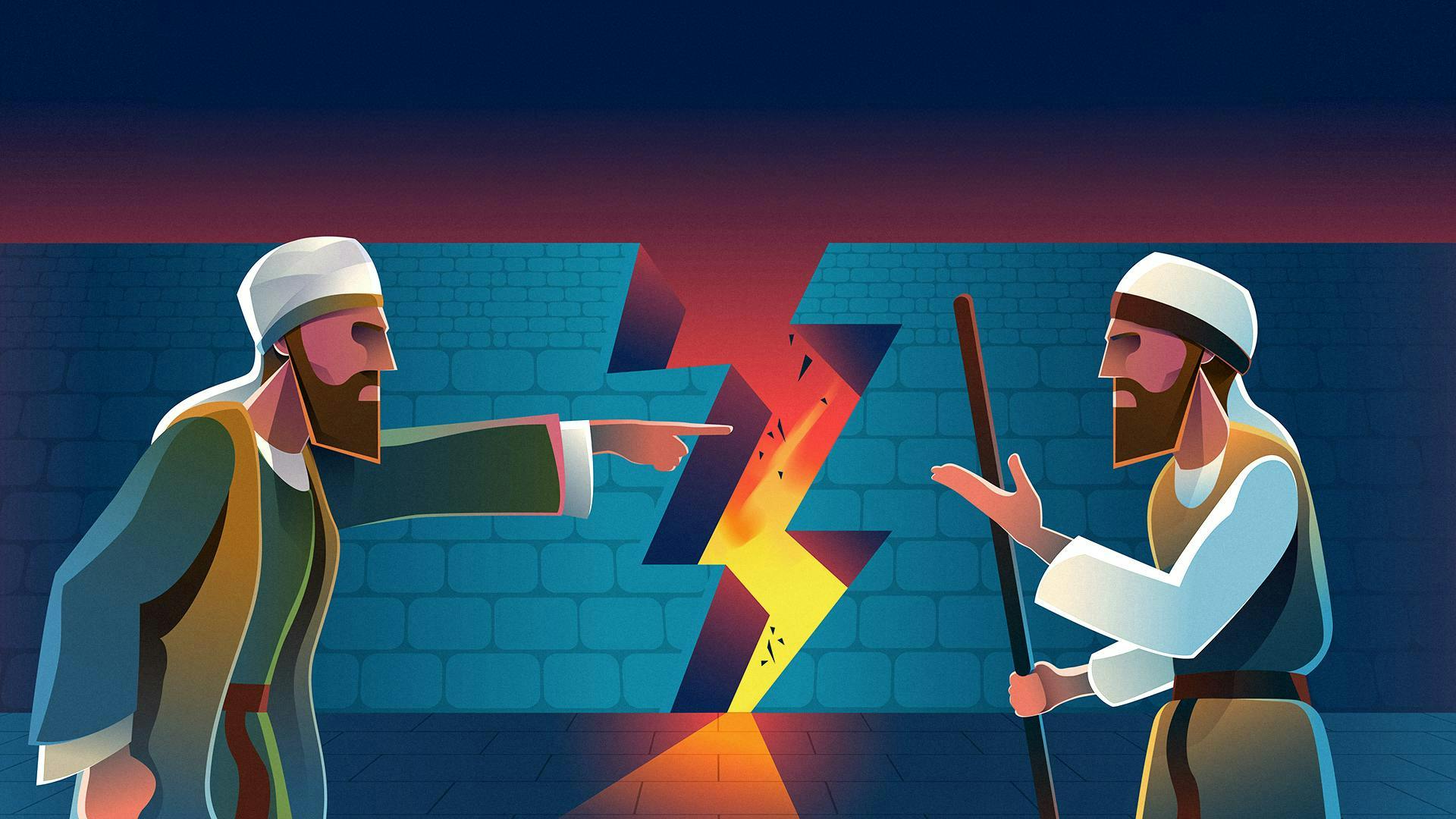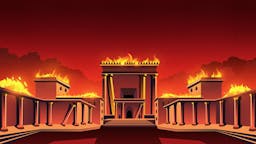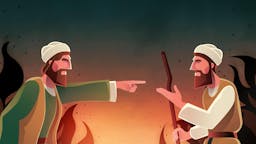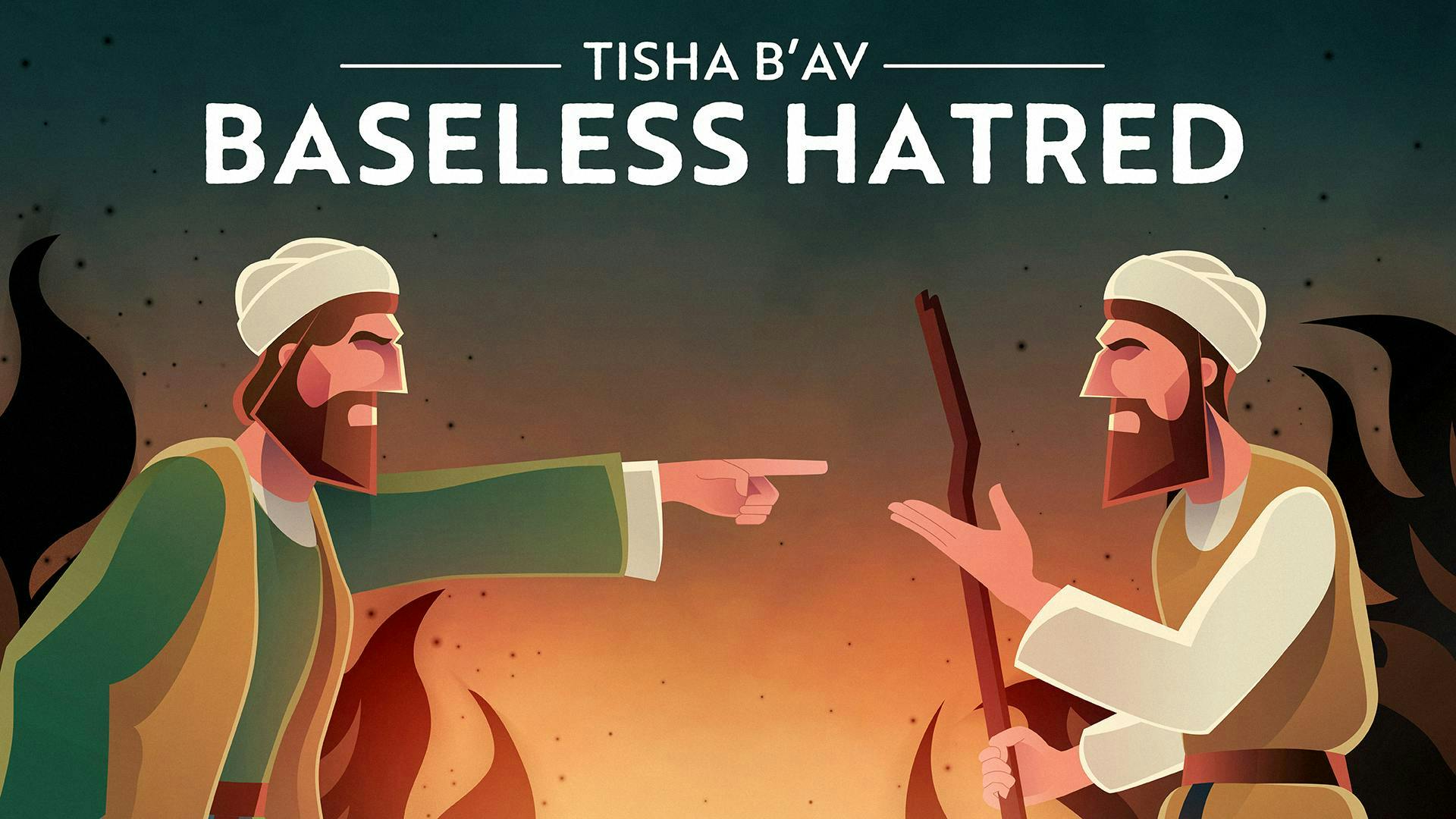How Can We Relate to Sinat Chinam?
Tisha B’Av: Why the Temple was Destroyed and How to Rebuild it
By Ari Levisohn | 1 July 2024 | 5 Minute Read

Sinat Chinam
The Talmud tells us that the second Beit Hamikdash (temple) was destroyed because of sinat chinam, baseless hatred (Babylonian Talmud Yoma 9b). Naturally, much breath has been expended in speeches encouraging ahavat chinam (baseless love) as a remedy. That's a lovely message, but to be honest, I have always had a bit of an issue with that. Does baseless hatred really mean that you hate someone for absolutely no reason at all? That doesn’t sound very realistic. Sure, people sometimes rub us the wrong way. Maybe you even take it as far as disliking them for no reason. But when was the last time you actually hated someone for no reason whatsoever? That doesn’t sound relatable at all!
And this is more than just an intellectual curiosity. The Jerusalem Talmud states
כל דור שאינו נבנה בימיו מעלין עליו כאילו הוא החריבו.
Any generation in which the temple is not rebuilt in its days is considered to have destroyed it.
(Jerusalem Talmud Yoma 1:1)
That means that we must still be guilty of sinat chinam today! But how? That doesn’t sound like something I would do! Unless… We don’t really understand what sinat chinam truly means.
Kamtza and Bar Kamtza
It just so happens that the Talmud itself tells us a story that illustrates this sinat chinam (Gittin 55-56). It even goes so far as to pin the entire destruction of the temple on this one event.
When we read the story, though, it doesn’t exactly sound like what we would picture as baseless hatred. But, as we suggested, sinat chinam might be something different. Perhaps this story might be exactly what we need to determine exactly what sinat chinam is, why the temple was destroyed, and what we need to fix today in ourselves.
Let’s take a look. The story can be broken up into four vignettes.
1. The Invite
This is as there was a certain man whose friend was named Kamtza and whose enemy was named bar Kamtza. He once made a feast and said to his servant: Go bring me my friend Kamtza. The servant went and brought him bar Kamtza.
2. The Feast
The host came and found bar Kamtza sitting at the feast. The host said to bar Kamtza. That man is the enemy of that man! (You are my enemy.) What, then, do you want here? Arise and leave! Bar Kamtza said to him: Since I have already come, let me stay and I will give you money for whatever I eat and drink.
The host said to him: No. (You must leave.) Bar Kamtza said to him: I will give you money for half of the feast. The host said to him: No. Bar Kamtza then said to him: I will give you money for the entire feast. The host said to him: No. Finally, the host took bar Kamtza by his hand, stood him up, and took him out.
3. The Offering
Bar Kamtza said to himself: Since the Sages were sitting there and did not protest [how the host humiliated me], learn from it that they were content with what he did. I will therefore go and inform against them to the king. He went and said to the emperor: The Jews have rebelled against you. The emperor said to him: Who says? Bar Kamtza said to him: send them an offering for the temple and see whether they will sacrifice it.
The emperor went and sent with him a choice, three-year-old calf. While bar Kamtza was coming with the calf to the Temple, he made a blemish on the calf’s upper lip. And some say he made the blemish on its eyelids, a place where according to us, it is a blemish, but according to the gentiles, it is not a blemish. (Therefore, when bar Kamtza brought the animal to the Temple, the priests would not sacrifice it on the altar since it was blemished, but they also could not explain this satisfactorily to the gentile authorities, who did not consider it to be blemished.)
The Sages thought to sacrifice the animal anyway to maintain peace with the government. Rabbi Zekharya ben Avkolas said to them: People might think that blemished animals may be sacrificed on the altar.
(The Sages were convinced not to sacrifice the calf but feared that bar Kamtza would report to the Romans that they rejected their offering.) The Sages thought to kill him so that he would not go and speak against them. Rabbi Zekharya said to them: If you kill him, people will say that one who makes a blemish on sacrificial animals is to be killed. (As a result, they did nothing, bar Kamtza’s slander was accepted by the authorities, and consequently the war between the Jews and the Romans began.)
Rabbi Yoḥanan says: The excessive humility of Rabbi Zekharya ben Avkolas destroyed our Temple, burned our Sanctuary, and exiled us from our land.
4. The General
The Roman authorities then sent Nero Caesar against the Jews. (Nero was ambivalent about attacking Jerusalem, so he set up a test.) When he came he shot an arrow to the east and the arrow came and fell in Jerusalem. He then shot another arrow to the west and it also fell in Jerusalem. He shot an arrow in all four directions of the heavens, and each time the arrow fell in Jerusalem.
He said to a child: Tell me a verse that you learned today. He said to him as follows: “And I will lay My vengeance upon Edom (Rome) by the hand of My people Israel” (Ezekiel 25:14). Nero said: The Holy One, Blessed be He, wishes to destroy His Temple, and He wishes to wipe his hands with me. So he fled and became a convert, and ultimately Rabbi Meir descended from him.
Dive Deeper
What do these four vignettes have in common? It definitely isn’t baseless hatred. There is nothing baseless about bar Kamtza’s feelings, and the rest of the stories don’t seem to be about hatred at all.
Join Rabbi David Fohrman in the following animated video, where he explores the concept of baseless hatred through these four connected stories.
Top Tisha B'Av Videos

What Rachel Imeinu Teaches Us About Mourning
Video series • Part 1 of 5 • 8 min
Mourning on Tisha B’Av may begin with the Temple, but it cannot end there. The familial conflict between Rachel and Leah offers a powerful lesson on how we can take the first steps towards fixing our national tragedy by addressing our personal relationships.

How Am I Supposed To Appreciate The Loss Of The Beit HaMikdash?
Video series • Part 1 of 7 • 9 min
It’s one thing to mourn the suffering of actual people, but how are we supposed to feel genuinely sad over the loss of a building?

Why Does God Let Us Suffer?
Video series • Part 1 of 6 • 11 min
If God loves us, why does God let bad things happen to us? This question may be impossible to answer, but on Tisha b’Av it’s just as impossible to ignore.

Kamtza And Bar Kamtza: What Is Baseless Hatred, Anyway?
Video series • Part 1 of 5 • 3 min
When was the last time that you hated someone for absolutely no reason? Could it be we’ve been misunderstanding the true meaning of “baseless hatred” this whole time?
More Tisha B'Av Content
What is Aleph Beta?
Aleph Beta is a unique kind of Torah library. Led by our founder, Rabbi David Fohrman, we are dedicated to high-level, textual Torah learning for adults that is intellectually and spiritually sophisticated, that enlivens your Jewish practice and helps you forge a deeper connection to God. Whether you’ve been learning in yeshiva for years or you’re just beginning your Torah journey, you’re sure to find something meaningful and surprising waiting for you here.
Browse our library of over 1,000 beautifully produced animated videos, podcasts, deep dive courses, and printable guides. Topics include the weekly parsha, Jewish holidays & fast days, laws & mitzvot, prayers, relationships, big philosophical ideas and more. Have something to say at the Shabbos table that will amaze your family and guests and bring deep meaning into their lives.


